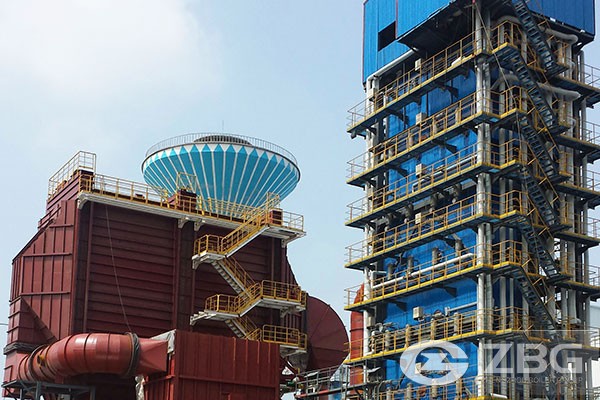What Is Waste Heat Boiler? Waste Heat Boiler Classification Introduction
The waste heat boiler is a kind of heating equipment that produces steam or hot water by using the waste heat generated by industrial enterprise kilns and other waste heat heat source equipment. Due to the diversity of "waste heat" types, the structural forms of waste heat boilers are various and different. In order to fully understand waste heat boilers, we must first understand the classification and characteristics of "waste heat".
Waste heat is the heat discharged without being fully utilized in industrial production. It belongs to secondary energy and is the product of the conversion of primary energy and combustible materials.
It can be classified from three perspectives: energy properties, process characteristics and flue gas characteristics of waste heat.
1. The nature of waste heat
According to the nature of waste heat, it can be divided into the following categories:
(1) High-temperature flue gas waste heat: it is a common form, which is characterized by large output, concentrated production points, strong continuity, easy recovery and utilization, and the heat taken away accounts for 40-50% of the total heat. The heat recovered by the boiler can be used for production or domestic heat and power generation.
(2) High-temperature slag waste heat: such as blast furnace slag, converter slag, electric furnace slag, etc. The temperature of the slag is above 1000°C, and the heat it takes away accounts for 20% of the total heat.
(3) Waste heat of high-temperature products: such as coke oven coke, steel ingots and billets, high-temperature forgings, etc., generally have a high temperature and contain a lot of waste heat.
(4) Waste heat of combustible waste gas and waste liquid: such as blast furnace gas, catalytic cracking regeneration waste gas of oil refinery, black liquor of paper mill, etc., they can all be utilized.
(5) Chemical reaction waste heat: such as metallurgy, sulfuric acid, phosphoric acid, chemical fertilizer, chemical fiber, paint and other industrial sectors, all produce a large amount of chemical reaction waste heat.
(6) Cooling medium waste heat: For example, a large amount of cooling water discharged from cooling devices such as water jackets of industrial furnaces, and steam produced by various vaporization cooling devices contain a large amount of waste heat, which can be used reasonably.
(7) Residual heat of condensed water: the physical sensible heat of steam used in the production process of various industrial sectors when the condensation decreases after the industrial process.

waste-heat-boiler
2. Process characteristics
Since waste heat is closely related to other production equipment and processes, waste heat utilization has the following characteristics:
(1) The heat load is unstable, which is mainly determined by the process of production.
(2) There are relatively large differences in the composition, concentration and particle size of smoke and dust. As a result, the layout of the heating surface of the boiler is affected, and anti-wear, dust blocking and dust removal must be considered.
(3) The diversity of flue gas components makes some flue gas corrosive. For example, SO2 in the flue gas, various metal and non-metallic elements in the smoke or slag may cause low-temperature or high-temperature corrosion and ash deposition on waste heat equipment.
(4) Restricted by the inherent conditions of the installation. For example, there are restrictions on the elevation of the boiler inlet and outlet; some restrictions on the exhaust temperature of the boiler to meet the requirements of the production process.
3. Smoke characteristics
Due to the different properties of waste heat flue gas, the types and structural forms of waste heat boilers are different. According to the structural characteristics, it can be divided into two categories: shell-and-tube waste heat boilers and flue-type waste heat boilers. According to the dust content and flue gas characteristics of waste heat boiler inlet flue gas, it can be divided into the following five categories:
(1) Waste heat boilers with dust content in the flue gas not greater than 20g/Nm3 are the first type of waste heat boilers;
(2) Waste heat boilers with a dust content of more than 20g/Nm3 and not more than 70g/Nm3 in the flue gas are the second type of waste heat boilers;
(3) Waste heat boilers with a dust content greater than 70g/Nm3 in the flue gas belong to the third category of waste heat boilers;
(4) Waste heat boilers containing cohesive dust in the flue gas are the fourth type of waste heat boilers;
(5) Waste heat boilers with strong corrosive components in the flue gas or toxic flue gas are the fifth category waste heat boilers.